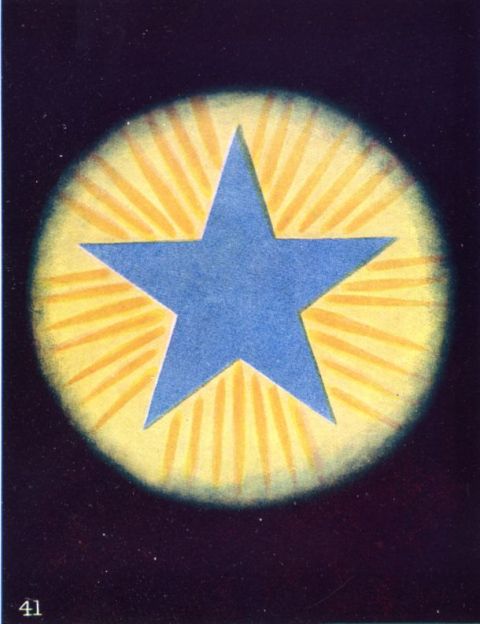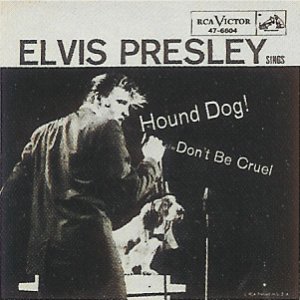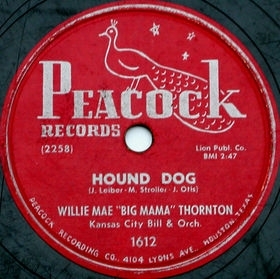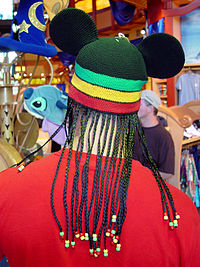This series argues when we take seriously the common Pagan insight that the world is pervaded by spirit and awareness “all the way down,” as well as all the way up, rather than simply being material dominated by physical laws or some deity’s plans, everything changes, in some ways subtly and in other ways profoundly.
In part one of Viewing the World Through Pagan Eyes, I argued the conceptual framework fitting such an animate world is the ecosystem. In part II I argued the modern scientific concept of a meme was, along with people, a member of this cultural or ideational ecosystem. We are probably unique in being inhabitants of both biological and ideational ecosystems. Memes, like viruses, exists on the cusp between the living and not-living world, and again like viruses, are a powerful evolutionary force in human life.
Memes enable us to be social beings with a language and customs providing common meanings far beyond physical signals. When we uncritically accept them, as we usually must, from a meme’s perspective we are their hosts, giving them mental energy and helping them replicate. In the case of a meme, a living mind is necessary for it to reproduce, as a living cell is necessary for a virus to reproduce. Our relations are usually symbiotic.
When viruses invade cells in order to reproduce, viruses sometimes change them so dramatically as to become a major force in biological evolution. Memes accomplish the equivalent through invading minds, and interacting with and shaping other memes, thereby playing a major role in the evolution of human culture.
 Consider marriage. Once people usually married to create a family, make an alliance between families, out of religious duty, or to assure security in old age. When the meme ‘marriage’ incorporated love as an additional reason, ‘love’ soon dominated other reasons. In many places marriage for love legitimized marriage between classes, races, religions, and finally gay marriage. Marriage for love was a memetic mutation that ultimately changed the meme’s wider cultural ecosystem.
Consider marriage. Once people usually married to create a family, make an alliance between families, out of religious duty, or to assure security in old age. When the meme ‘marriage’ incorporated love as an additional reason, ‘love’ soon dominated other reasons. In many places marriage for love legitimized marriage between classes, races, religions, and finally gay marriage. Marriage for love was a memetic mutation that ultimately changed the meme’s wider cultural ecosystem.
Such mutations depend on their environment for success as much as does a biological mutation. The mimetic ecosystem in which a person participates can be receptive or hostile, to new memes. Love proved transformative for marriage, but “love your enemies” has had little impact.
Secular science can take us this far. But we can go farther.
A step farther: Thought forms and memes
Western occult and magickal traditions describe thought forms as deliberately created by a magician to generate a kind of artificial entity charged with the mage’s intent. Unlike biological entities, thought forms require focused mental energy from their creators to persist. Some occultists also describe what they call an ‘egregore,” which is a kind of spontaneous creation of many minds. We encounter egregores, for example when experiencing the atmosphere surrounding a musical or sporting event or other mass phenomena. When the event is over, the crowd disperses, and as it does, the energy producing the egregore dissipates.
From this occult perspective, a meme is a ‘wild’ thought form. Like a traditional thought form or egregore, to survive, a meme depends on mental energy supplied by those making use of it, the quality and quantity of that energy influencing its power. It weakens as this energy declines.
Memes in Ecosystems
Any culture is at least a network of people and memes giving structure to how people within it interact. Members of a culture feel at home in it and people from very different cultures often find what others take for granted to be strange. They are ecosystems of the mind.
Like other ecosystems, cultures often change independently of anyone’s intentions. Cultural practices may gradually spread, such as tattoos have today. They may largely disappear, as has big band music. Cultures may also adapt in unforeseen ways due to a meme’s influence, as with my example of marriage.
Cultures can overlap with other cultures (not all Pagans are Americans and not all Americans are Pagans) and a subculture can exist within another culture. But what counts as a subculture depends on what counts as a culture. From the perspective of people analyzing Western culture, American culture is a subculture. If American culture is the inclusive one, the unique culture of Taos, New Mexico, where I live, which combines Hispanic, Anglo, and Indian cultures, exists as a subculture. Some subcultures are more based on belief or activity than location, such as Neo-Pagan subcultures, subcultures of mountain climbers and chess players, and many more. If we consider American Indians, the Hopi constitute a subculture and within them there are traditional Hopi and Christian Hopi, with very different outlooks on some issues.
Additionally, when we define people as members of a culture, we are rarely surprised when they sometimes regard their membership in another culture as more important. Are we Americans? Texans? Small farmers or business people? New arrivals or long-time residents for many generations?
Cultures often overlap. In some ways my Gardnerian subculture shares more in common with non-Western Pagan cultures than with mainstream American and European cultures. In other ways it shares more in common with mainstream American and European cultures than with any non-western culture
The ecosystem model helps us to understand these intricate patterns of distinction and inclusion. Like cultures, a biological ecosystem is also a network, all of whose components are engaged in a complex process of mutual adaptation that creates a discernable pattern even though no one planned it that way and every element in it is changing. Some organisms live in many ecosystems, some in only one, and some overlap with others but not everywhere.
When different cultures encounter one another, sometimes the resulting changes are marginal, as when Portuguese deep-fried vegetables became the inspiration for Japanese tempura. Other encounters can be transformative, disruptive, or destructive, and much of this latter we call human history. At its most extreme, sometimes a culture can change so dramatically so as to become something very different, as when hunter gatherers took up agriculture. Similar phenomena are common within biological ecosystems.
From this perspective cultures are ecosystems consisting at least of human beings and memes/thought forms. It is at this point that we can begin to grasp how important such a Pagan perspective can be in understanding societies. It is also important for gaining a grasp of many issues currently challenging us.
The Volk as an ecosystem
The idea of a Volk has played an important but complex role in modern NeoPagan thought. The term originally arose in Germany in the work of Georg Gottfried Herder (1744-1803). While himself an Enlightenment philosopher who supported the French Revolution, Herder understood humanity in more concrete and subtle ways than its dominant emphasis on abstract reason and universal individual rights. He viewed people and their cultures as immersed within and powerfully shaped by their linguistic and natural contexts. In doing so, Herder helped lay the groundwork for the Romantic reaction that followed and contributed to the thread of thought that led through the Humboldt’s and Haeckel to ecology.
Herder argued the primary key to understanding humans existed in language, which is not the creation of the individual, but of the group speaking it. We think with language, and that thinking is shaped by its qualities, including the relationships it makes possible. For Herder two conclusions arose. First, the actual boundaries of a particular society were determined by its language. He named this community the Volk. Second, within this group, all were equal. Thus, the Volk provided the context within which the individuals within it could develop and express their creativity and individuality.
Herder argued every linguistic group had its own excellences shaped and maintained by its language community, and none could be said to be intrinsically superior to others. Individuals within a Volk expressed these qualities, each in their own way. Herder thereby sought to meld the Enlightenment’s liberating principles with recognizing and honoring the concrete differences between different peoples.
Herder was no apologist for one people’s subjugation of another. Every genuine culture exemplified a Volk. On the other hand, he also believed a Volk was a kind of organism needing to maintain boundaries, on pain of illness if it failed.He explained:
Has a people anything dearer than the speech of its fathers? In its speech resides its whole thought-domain, its tradition, history, religion, and basis of life, all its heart and soul. To deprive a people of its speech is to deprive it of its one eternal good…. The best culture of a people cannot be expressed through a foreign language; it thrives on the soil of a nation most beautifully, and, I may say, it thrives only by means of the nation’s inherited and inheritable dialect. . . .
Herder discovered and explored genuine flaws in the Enlightenment’s way of conceiving the world, and traveled part of the way towards healing them. Herder’s analysis is similar to my own, with one crucial difference. He described a Volk as a kind of organism. I am describing it as an ecosystem, a field of relations open to its environment. The words and structure of a language are the most important memes, but language itself is a kind of ecosystem rather than an organism. And as an ecosystem it has fuzzy borders and its elements are always in a process of change and adaptation. Organisms, however, must defend their boundaries if they are to survive.

Johann Gottfried von Herder, detail of an oil painting by Gerhard von Kügelgen, 1808; in the Library of Tartu State University, Estonia.
Unlike Herder’s image of a Volk as having an unchanged linguistic essence, a living language is always a pattern of changes as well as continuities. When marrying for love spread throughout Western societies, that word transformed how many thought about relations between the sexes. But Western Civilization did not become something else.
In addition, unlike Herder’s view, individual creativity is shaped but not determined by language and culture. Individuals can never be reduced simply to various better or worse expressions of the Volk. Individual creativity expressed through successful memes gives birth to all that is culturally new.
This distinction between organism and ecosystem is very relevant to current issues within the larger NeoPagan community.
Contemporary struggles
Today, usually on the political right, some NeoPagan groups are seeking to revive an exclusively völkisch Paganism rooted in a particular culture and rejecting influences from other cultures. They have an organismic view of what constitutes a people. Some NeoPagans identifying with the left are arguing that Pagans in dominant Western cultures are illegitimately “appropriating” practices central to the identity of weaker cultures. Both share a common belief that the cultures they defend are in some sense distinct entities, as Herder suggested.
Let me give an example.
Here in America the influence of Black culture, rooted in slavery, has become an issue for both perspectives. Jazz, the blues, and rock and roll’s deepest roots were in Voudon, particularly as it developed among slaves, especially in New Orleans. Voudon itself is a syncretistic practice rooted in the practices of the original Indian inhabitants of Haiti as well as the Irish Goddess Brigit, along with its dominant African themes. (From my perspective, Voudon is an excellent example of a religion as spiritual ecosystem, not spiritual organism.)
For the völkisch right this music was alien to ‘White culture.’ Henry Ford described such music as “Monkey talk, jungle squeals, grunts and squeaks and gasps suggestive of calf love are camouflaged by a few feverish notes and admitted in homes where the thing itself, unaided by scanned music.”
In Europe the Nazis frequently attempted to ban jazz and swing music as unAryan.
In America it was considered so alien to ‘American culture’ that efforts were made to replace swing dancing with square dancing, (not realizing it also had Black roots).
Today this music’s popularity among White musicians is described by some members of the Pagan community and others who regard themselves as progressive as “cultural appropriation.” While their personal motivations are more defensible than the right, the underlying framework of their thinking is remarkably similar. They just pick a different side.
Of Hound Dogs, Appropriation, and Memes
Elvis Presley’s blockbuster hit, “Hound Dog” is a commonly cited example of this musical ‘cultural appropriation.’ Rock ‘n roll was a product of Black culture, having direct roots in the blues, but did not make it big in America until Elvis sang Hound Dog. As the common story goes, Big Mama Thornton, a Southern Black Blues singer, first sang the song four years before Elvis did. It was a modest success but she never received the recognition Elvis did. Until then, outside of African American circles, this kind of music was largely ignored. Some people now say Elvis ‘stole’ or ‘appropriated’ an unacknowledged element of Black culture.
This account misunderstands what happened. To be sure, the blues, and rock n’ roll which grew from it, have vital roots in African music brought over by the slaves. They were allowed to perform it at Congo Square in New Orleans, where French Catholic slavery was less totalitarian in its impact than was its equivalent in the Protestant South. Our nation’s defining cultural contributions to the world’s musical heritage owe their existence to Africa.
But there is more to the story.
Imran Rahman-jones writes that the blues have two parents. The first is African music and the second is European folk music. The Blues’ harmonic structure is European, not African. Its “12-bar progression comes from European chords. European instrumentation was also adopted: the guitar in its classical form, comes from Europe. And no instrument is more strongly associated with one particular genre than the harmonica,” which originated in Vienna.
Rahman-jones observes it was “quite remarkable that the mix in cultures happened at all” given the power of segregation when the blues arose. Perhaps because their common love of music mattered more than race, musicians often ignored or circumvented racial divides. From the beginning, many were White musicians, although more were Black. This account fits a mimetic ecological view, not an organismic one.
Far from ‘stealing’ Black music, Presley was explicit about his enormous debt to Fats Domino. For example, at a 1969 press conference in Las Vegas, as Craig Philo recounts the incident, “When a reporter referred to Elvis as the ‘King of Rock ’n’ Roll’ . . . he rejected the title, as he always did, calling attention to the presence in the room of his friend Fats Domino, ‘one of my influences from way back.” Philo added “He often paid homage to Fats recognizing no one could sing those songs like he did.” In turn, Domino was a fan of Presley: “Boy, he could sing. He could sing spirituals, country and western, everything he sang I liked.”
This mutual admiration between two musical greats is what we would expect within a musical subculture where all involved were using and exploring common musical memes they loved.
Rahman-jones explains what led some today to complain of ‘cultural appropriation’ as coming from commercial recording, not musicians. Record companies categorized Black musicians as playing blues or race music, and Whites as playing country or hillbilly music. In his essay, Rahman-jones writes “The music was so similar that even the record labels got it wrong sometimes,” confusing the artists and their race.
Rahman-jones ends his article by pointing out that Hound Dog, first played by Big Mama Thornton, was written for her by two, 19-year-old American Jewish kids, Jerry Lieber and Mike Stoller. The language of cultural appropriation cannot begin to grasp this complexity, but viewing culture as the intertwining of people and memes easily can. The musical subcultural ecosystem resists any simplistic reduction into racial or cultural categories.
The language of cultural appropriation is of no help I understanding the mistreatment of Black musicians. Brihana Joy Grey cuts to the chase
the life stories of early 20th century black musicians are stories of poverty and exploitation by a predatory music industry that lifted their sounds and left them with nothing. The trouble isn’t that Elvis sang the songs but that he did so in a viciously racist economic landscape that didn’t reward black cultural innovation with black economic success. Using cultural “ownership” doesn’t help us here—after all, “Hound Dog” was written by white songwriters, albeit specifically for Thornton, who added her own improvisations. But it’s still obvious we’re dealing with a racially unequal music industry.
Gray’s indictment was not of musicians, the supposed appropriators. It is of racism combined with capitalism, an indictment with which I completely agree.
Gray writes music “is inherently appropriative.” In fact, it “thrives on creative allusions, sampling, and embellishing the groundwork laid by earlier artists.” Nevertheless, she claims “‘borrowing’ becomes a problem when a piece of art is given preferential treatment because of preexisting racial hierarchies of value – causing the work of people of color to be devalued, and artists to be undercompensated for their innovation.” But Gray has granted the real problem is not cultural appropriation, but racism and a social structure that maintains it.
Once we grasp what memes are we are better able to understand how creativity shapes our cultural lives and be better able to focus on the core problem the ‘cultural appropriation’ meme obscures in the name of clarifying: racism and the social institutions that empower it. The sad irony is that the underlying framework of culture as an organism of which we are mere members that leads to charges of cultural appropriation also buttresses the cultural racism of the völkisch right.
I only add one point of clarification. I am referring to respectful use of symbols and practices from other cultures. Disrespectful use is another matter, but such disrespect usually comes from beliefs in the superiority on one’s own culture, as with Whites’ use of blackface minstrel costumes in the U.S. But this racist based use is not the issue in most or all claims of ‘cultural appropriation’ made within our own Pagan community.
The next installment
For Herder the Volk was also intimately connected with the land on which they lived, and the culture that characterized a people reflected its influence. As he put it
The structure of the earth, in its natural variety and diversity . . . Seas, mountain ranges and rivers are the most natural boundaries not only of lands but also of peoples, customs, languages and empires, and they have been, even in the greatest revolutions in human affairs, the directing lines or limits of world history.
References:
Viewing the world through pagan eyes:
Part I: https://wiccanrede.org/2019/07/viewing-the-world-through-pagan-eyes-part-i/
Part II: https://wiccanrede.org/2019/07/viewing-the-world-through-pagan-eyes-part-ii-memes-as-organisms/
Images:
Love meme: https://www.trueshayari.in/images/love-status-images.html
Thought form: The Logos as manifested in Man: https://en.wikipedia.org/wiki/Thought-Forms_(book)#/media/File:Form41.jpg
Herder: https://www.britannica.com/biography/Johann-Gottfried-von-Herder
Elvis Presley ‘Hound dog’: https://en.wikipedia.org/wiki/Hound_Dog_(song)#/media/File:HoundCruel.jpg
Mama Thornton: https://en.wikipedia.org/wiki/Hound_Dog_(song)#/media/File:Big-mama-thornton-hound-dog.jpg
Fake dreadlocks: https://en.wikipedia.org/wiki/Cultural_appropriation




